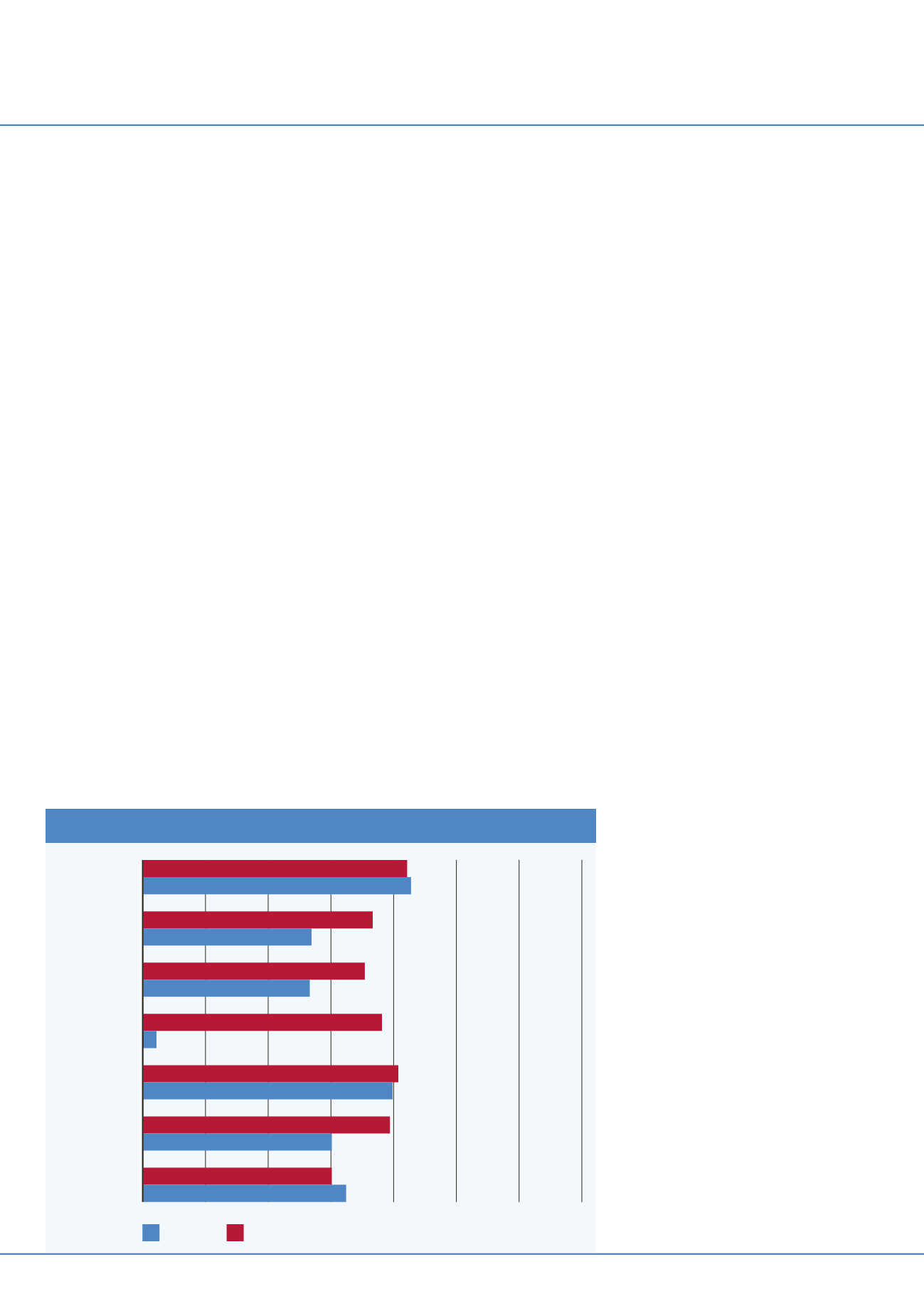
ECONOMICOUTLOOK
Infrastructure first
international
construction
april 2014
24
Infrastructure first
E
merging market economies have been
under pressure in recent months, and
India is among those most affected.
These economies boomed for much of the past
decade with easy monetary policy globally, the
commodities super-cycle and rapid globalisation
of trade. Inmany cases, therewas additional fiscal
stimulus to counteract the global recession.
However, while the share of global GDP
accounted for by imports increased from just
under 20% in 1995 to over 30% in 2011, it has
remained at that level into 2014.This stagnation
has limited the export opportunities that have
been crucial to emergingmarkets such as India.
Countries such as India also face an additional
challenge – when financial returns were low in
theUS andEurope, investors looked to emerging
marketswith theirpotentiallyhigh returnsdespite
higher financial risk.
With theUS in economic recovery and Europe
stabilising, developed economies offer higher
potential, as risk has grown in India and other
markets.The result has been limiting the flow of
foreigndirect investment onwhich India relies.
Most importantly, India, like many emerging
markets, failed to engage in market reforms
when the opportunity afforded itself. As a result
financial incentivesworking against India and the
unattractive business environment is reinforcing
the negative trend.
Worst is over
The worst for India’s economy may be over, but
the recovery will be shallow and protracted with
weaknesswell into the next fiscal year, at least.
The main engines of growth historically –
investment and private consumption – remain
fundamentally weak, inevitably dragging down
industrial production, manufacturing and
construction.
Infrastructure spendinghas been a bright spot –
however, the government budget deficit will limit
additional fiscal boosts togrowth.Theoutcomeof
general elections inMay should reduce political
uncertainty, opening up prospects for higher
investment and growth late in2014.
Although uncertain, India’smedium- and long-
term growth prospects are still favourable, as
expected reforms with a new government confer
significant gains in supply-side efficiency.
Boosting investment is critical to India’s
recovery. Fixed investment growth has fallen to
+2.8% per year comparedwith double digit rates
in themid-2000’s, partially due to stalled reform.
The government did manage to clear 36 big
ticket investment projects late last year worth
nearly US$ 27 billion, but the financing and
implementation of these projects may still prove
to be difficult given deteriorating public finances
and rising banking sector risks.
Favourable demographics
On the positive side, India is blessed with
favourable
demographics
and
abundant
labour, strong export potential, and growing
contributions from the service and construction
sectors. Rapid urbanisation rates will also act as
an important force of change in the long-term.
The construction outlook reflects the current
realities inIndia,whilebuildingon theexpectation
for reform. Inparticular, the forecast growth rates
are typically a full percentage point below what
was projected last year, given what will be tepid
GDP growth in the near term.
Also, forecast growth is back-loaded, assuming
that reforms materialise after the election and
take time to work through to the construction
economy. For example, construction of non-
residential structures will average compound
growth of +7.9% over the next five years, but
growth for thenext threeyearswill average+6.2%.
The average over the following years will
be +8.2%. To the extent that reforms fail to
materialise,medium to long termgrowthwill lose
considerably–potentially shaving twopercentage
points frompotential growth.
The forecast for the residential sector is relatively
weak. Urbanisation, population growth and an
emerging middle class contribute to growth,
but consumer confidence remains weak and
higher interest rates are particularly costly to this
segment. Unlike China and Brazil, India offers
limited public spending on housing, and private
demandwill be limited.
Office construction has been strong for the
past five years, driven by India’s technical services
industry.Demand from this sectorwill wane over
the forecast, but anticipated growth in financial
andbusiness serviceswill drive continuedgrowth.
The forecast for growth in industrial structures
does hinge upon market reforms to boost
India’s manufacturing industries and export
competitiveness. Reforms have already been
partially implemented for some commercial
categories, notably retail trade.
Infrastructurehasbeen the strongestperforming
segment over thepastfiveyears, and itwill remain
Indiamust invest in additional infrastructure in order tomeet even its reduced economic outlook.
Scott Hazelton
reports.
Historic and future growth
Infrastructure
Industrial
Institutional
Commercial
Office
Non-residential
Residential
0%
4%
2%
2009-2014
2014-2019
6%
8%
14%
12%
10%
8.4%
7.3%
8.5%
5.4%
7.1%
5.3%
7.6%
0.4%
8.1%
8.0%
7.9%
6.0%
6.5%
6.1%


